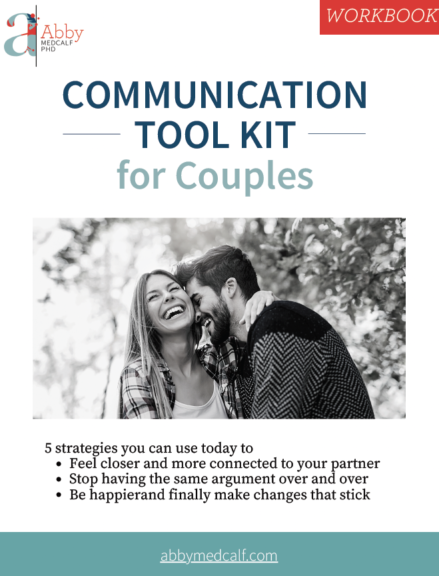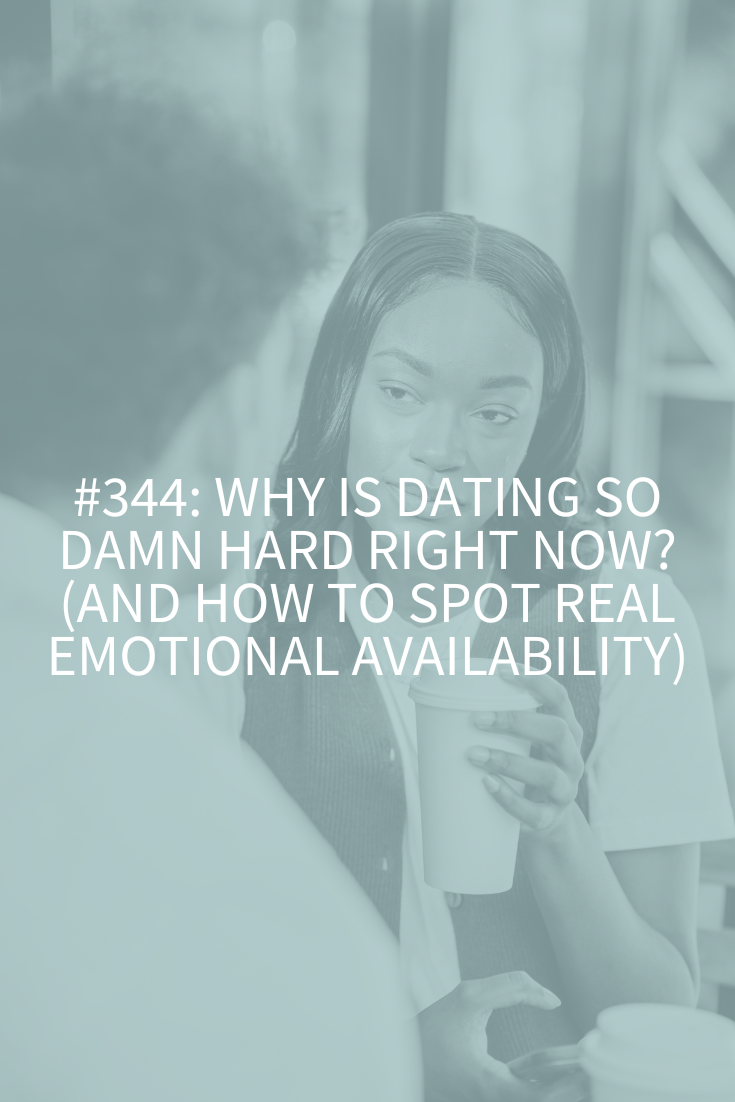
12-minute read
Prefer to listen to the podcast? Click here!
I’m sure you’ve heard of the fight/flight/freeze response, but did you know that there’s also a fourth type of response called fawn which is like people pleasing on crack? Today I’m breaking down these four different conflict responses and then you’ll learn my two-step process to start taking control of your emotional reactions today!
What is Trauma?
Last week I talked about unhealed trauma. If you haven’t listened yet, please go back and check it out! For now, I want to quickly recap what I mean when I say “trauma.”
As I’ve mentioned before, trauma is sometimes hard to pinpoint (and it’s why you might not realize you’ve had it) because what’s traumatic to one person might not be traumatic to another. So how your mom acted as a parent might not have affected your younger sister but might have had a negative impact on you.
And trauma can come from neglect just as easily as it comes from overt physical or sexual abuse. What I find with many of my clients is that they don’t identify something as traumatic because objectively they think, “Well, I grew up in a good home… intact family, money, best schools… so there was no trauma.” Or, “I was raised by a single mom who had to work a lot, but I always knew I was loved.”
You’ve got to remember that this is your adult brain making sense of something! Your kid brain didn’t have this ability and not having a parent around or feeling that a parent wasn’t interested in you or didn’t engage with you can be traumatic to a kid. Maybe when you shared your feelings you were shut down, so emotionally abandoned. Maybe you felt like you couldn’t share your feelings because you didn’t want to upset your parent. All of these can result in unresolved trauma that’s affecting your life and relationships today.
Now, everyone has the fight/flight/freeze response. It’s hardwired into our brains and doesn’t have to be about trauma; it gets triggered by anything that feels like a threat or conflict. The issue is how much you get triggered and for how long. That’s where trauma plays a role.
So, here you are today in your adult body and life, and you might be having a response to something innocuous and you wonder later why you “overreacted” or went numb and disassociated (you can’t even remember what happened). This is likely you being triggered by something deeper and having a trauma response.
In that moment you perceive something as an attack (which could just be your boss giving you feedback) or as abandonment (if your partner is late you think, “If they loved me, they wouldn’t be late all the time”). You have a “hair trigger” for your fight/flight/freeze response and you can’t “turn it off” easily – even if the threat you perceived is over. Basically, your sympathetic nervous system gets triggered by something that shouldn’t trigger it and you can’t get back to a relaxed state (parasympathetic nervous system).
So let’s say you’re visiting your parents and your dad asks why you haven’t been promoted at work yet.
Unbeknownst to you, your internal unconscious dialogue says all kinds of things that are triggered from your childhood: “He thinks I’m a loser. I can never live up to his expectations. I hate when he does this! I can’t deal – I think it’s time to leave. I’ll never be as good as my perfect brother.
This signals your amygdala to sound the alert and that fight/flight/freeze response I’m always talking about. So, you might:
- Fight: go off on your dad and get angry
- Flee: remember that it’s really time to blow dry your hamster and that you’ve got to go home
- Freeze: say nothing and nod your head as he goes on and on. Or
- Fawn: you might try to please him and tell him tons of great things happening at work, lie and say you were promoted or take his advice and quit your job even though you love it.
I’d never heard of this response until recently when I read an amazing book, Complex PTSD: From Surviving to Thriving, about surviving (and thriving) from trauma by a therapist named Pete Walker and it’s a game-changer! In it, he coins the term, fawn or fawning and it’s when you use people pleasing to avoid or diffuse conflict.
Love the podcast? I’d be so grateful if you left a review! Just launch Apple’s Podcast app on your mobile device, search for the Relationships Made Easy podcast, and scroll down to rate and review!
So, let’s recap all four responses in a little more detail so you can more readily see where you might fit.
1. Maybe You’re a Fighter
In an argument or when you’re upset, you’re focused on arguing your point and being right. You dig your heels in and some people might even call you stubborn (sorry, I’d never call you that – I said, “some people”). You get defensive and stand by your beliefs first and foremost. It’s possible you’ve lost your temper before and then feel bad about it later but justify your reasons.
When your sibling, friend or partner (insert difficult person here) is talking to you, you’re already thinking of your response and often misunderstand what they’re saying due to your impatience to say what you want to say. The longer the argument or situation goes on, the more rigid you’re likely to become.
You might have a hard time calming down and it might take you a few days to see reason or “come around.” Even after the other person apologizes, you find yourself still feeling angry and not able to accept their apology and move on quickly.
You might notice that you actually look forward to fighting in a way. You feel “right” and can’t wait to express your opinion and you feel almost “high” or an out of body experience when you’re “in it.” If you “see red” and feel like you can’t calm yourself once you get going, you’re likely a Fighter.
When your fighter characteristics are at their worst you can be explosive, controlling, entitled, demanding, perfectionist and even a bully. You try to control to connect and you use rage/anger to feel safe.
Some of the feelings you identify with most often may be anger, resentment, frustration or rage.
2. Or Maybe You Flee
This response can take many forms. The obvious ones are to physically leave the room or an argument because you’ve “had enough,” avoid conflict or fights altogether, or abandon your family or relationship.
But there are other ways fleeing shows up that you might not recognize as readily: avoiding “endings” of things, such as not showing up for your last day of work, your last session with your therapist, or at a farewell party for a friend. Maybe you call in sick when things are difficult at work or don’t say good-bye when you’re leaving a dinner gathering.
Getting engrossed or lost in social media, emails, the Internet, video games, or your smartphone are also forms of escape or fleeing. There are also other types of escape including drugs, alcohol, food, shopping, exercise or sex as a means to avoid or not deal with a situation or feeling.
When your flight characteristics are at their worst you can be obsessive, rushed, too busy, micromanaging, perfectionistic, panicked, or hooked on getting some adrenaline. You think you need to be perfect to connect and you use perfectionism to feel safe.
Some of the feelings you identify with often are: What feelings? You’re busy avoiding the ones you don’t like and figuring out ways not to feel uncomfortable!
3. Do You Freeze?
Do you mainly try to stay under the radar? Do you try to lay low so that whatever danger is around will pass on by? Consistent procrastination, certain types of avoidance and taking no actions are all things Freezers do. Maybe making no decision is how you make your decisions. You spin and spin on things that are bothering you but don’t take action to make changes. Instead, you get into “analysis paralysis” and stay stuck.
Maybe your mother calls and asks when she can visit and you just don’t call back. You don’t want her to come over and you don’t want to have the conversation telling her that, so you avoid her in hopes that she’ll forget or go bug your brother instead.
Maybe you need to call a work colleague back, but you didn’t finish the project you were supposed to have done so you avoid meeting. You then keep procrastinating and make the situation worse. Or you might be someone who makes an appointment for something inconsequential like getting your nails done or your oil changed, but when you realize you can’t make it, you feel anxious and upset about cancelling and don’t do it; instead, you avoid it and get your nails done or your oil changed somewhere else next time.
When your freeze characteristics are at their worst you can be isolating, incapable of making decisions, codependent, or a couch potato. You think there’s no way to connect and you hide to be safe.
Some of the feelings you identify with often are anxiety, depression, beating yourself up, overwhelm and regret.
4. Or Maybe You Fawn
In Pete Walker’s book he says, “Fawn types seek safety by merging with the wishes, needs and demands of others. They act as if they unconsciously believe that the price of admission to any relationship is the forfeiture of all their needs, rights, preferences and boundaries.”
Fawning is basically gnarly codependency. You’re focused on getting the approval of other people so you end up trying to twist yourself into whatever it is they’re looking for so you can feel safe in your relationships. Maybe you feel like no one ever gets you or understands you.
Your boundaries end up being nonexistent as you say yes to whatever’s asked of you, even when it’s to your own detriment. You don’t get your own work in on time because you were helping a coworker, or you have no time for yourself because you were doing 100 things for your family. You overcommit often or do things you don’t want to do because “no” is not a word you’re comfortable with.
You’re responsible for everyone’s feelings. Girlfriend upset? Must be my fault. Friend didn’t like the movie you recommended? You feel guilty or upset for hours because you wasted their time! Mom sad? If you were a good daughter, you’d find a way to make her happy. You feel guilty or ashamed when you get mad, frustrated, or disagree with people close to you. Instead of getting mad at anyone else, you turn on yourself. You try desperately to read others minds and anticipate their needs or what would make them happy because, at the end of the day, you feel responsible for what someone else feels. And you’re terrified they won’t be happy with you, which means they’ll leave, and you’ll be left alone.
You might avoid certain social situations or feel overwhelmed with everyone’s feelings. This results in your feeling numb or dissociating as a means of coping with the threat you’re feeling.
When you get triggered, you’ll do anything to keep the relationship and avoid conflict or feeling bad so you also might agree with everything the other person says, lose your own sense of self or values and opinions. You do all of this to appease the other person, so they won’t leave you… no matter what.
One thing I read called people who fawn “emotional chameleons” trying to blend in so they can feel safe. People who have this stress response aren’t trying to manipulate exactly. This is all unconsciously motivated. It’s not like a narcissist who has a hidden agenda they’re trying to direct you to. Instead, remember this is all about their primal fear of being abandoned, rejected and left alone. People who fawn don’t feel powerful. Instead, they give up all their personal agency to other people because they so desperately want to belong.
As Walker describes it: “If you’re a Fawn type you think it’s safer to listen than to talk; agree than to dissent; offer care than to ask for help; elicit the other rather than express yourself; leave choices rather than express preferences.”
When your fawning characteristics are at their worst you can be a doormat, perfectionistic, lose yourself, lost in serving others. You’re trying to merge to connect and you grovel to feel safe.
Some of the feelings you identify with often are guilt, shame, resentment, loneliness, disconnection, disassociation or numbness.
What to Do?
Step 1: Learn to Identify a Real Threat from a Perceived Threat
- Get mindful and in your moments. Practice, practice, practice.
- When you notice someone else’s anger, worry or upset, allow yourself to just be with it. Instead of fixing, focus on being. Practice not being triggered by these emotions from others. Practice allowing others to have their feelings without you intervening in any way. What is this discomfort telling you?
- What’s key about doing this is that you’re teaching yourself to identify consciously what’s a real threat and what’s a perceived threat.
Step 2: Have a Healthy Mix of the Four F’s
The goal is to have a healthy mix of the four F’s when you feel threatened or danger.
Let’s break down each one:
Fighter: Keep healthy boundaries, be assertive and ask for what you need
Flee/Flight: Learn when to disengage and have a healthy retreat when pushing forward will exacerbate the situation. You know how to persevere because you can get shit done yourself. You’re industrious and trust your own know-how.
Freeze: There’s an acute awareness and being in the moment here. When you’re in a healthy place you can take a moment to assess what’s really happening and think before you act. Walker describes a “poised readiness.”
Fawn: You’re able to listen, help and problem-solve. You lean into love and service without self-detriment. You’re fair and can express your point of view and needs.
RESOURCES
You Might Be Suffering from Unhealed Trauma
Boundaries: How to Make Them and How to Hold Them
How to Say “No” and Stick to It
Mindfulness Hacks: Reduce Stress and Anxiety
Mindfulness: 2 Hacks for Remembering to Be Mindful
RESEARCH






